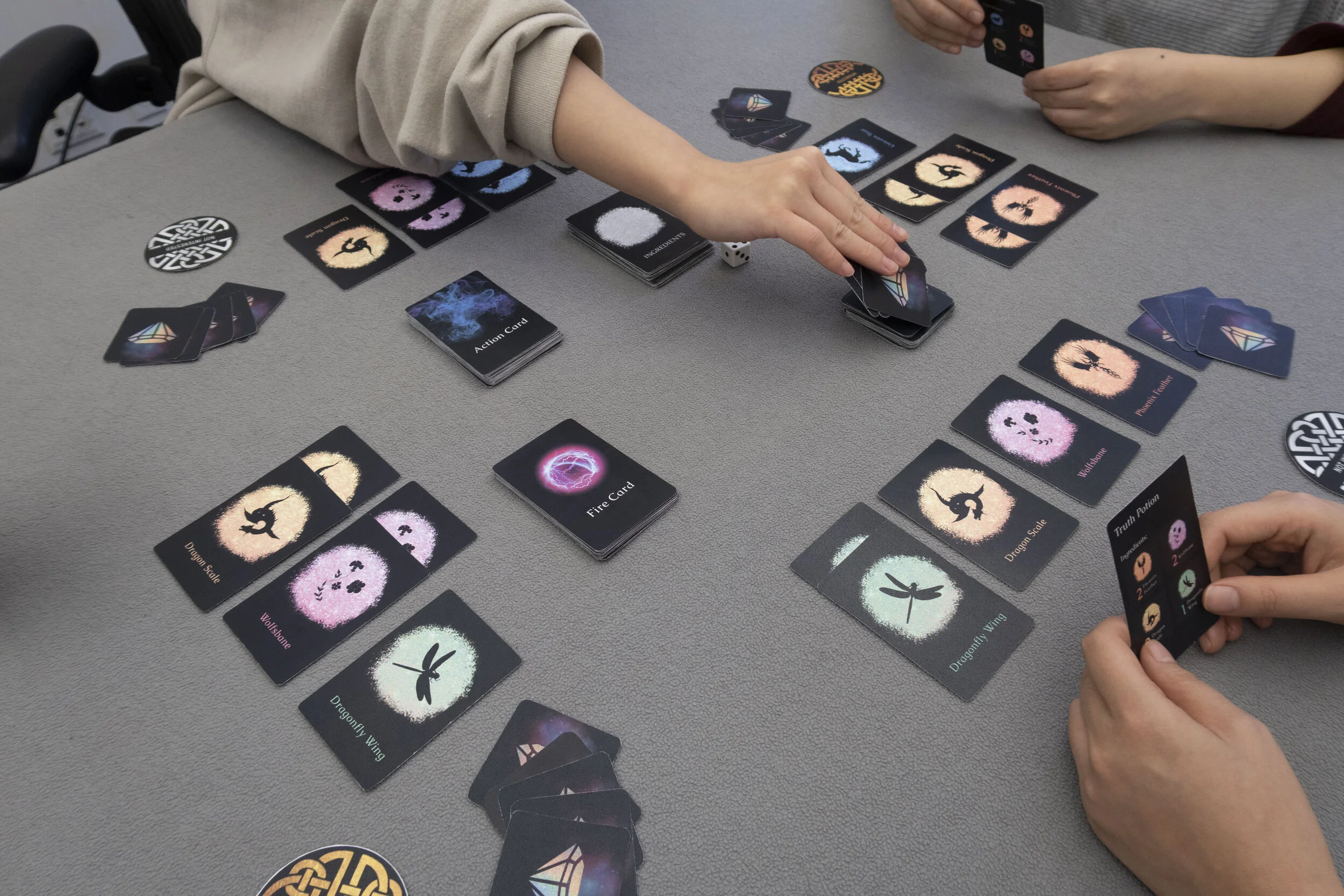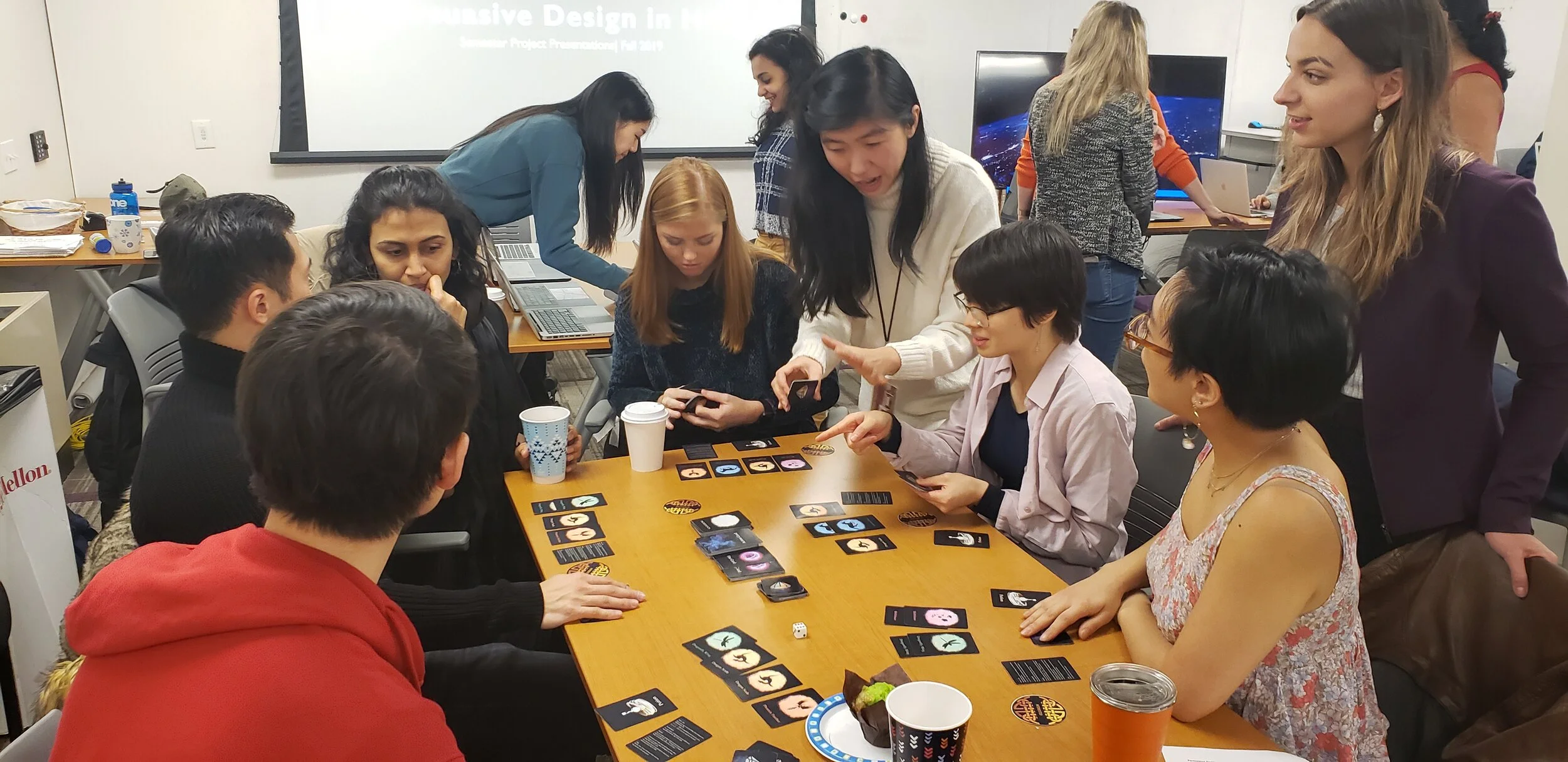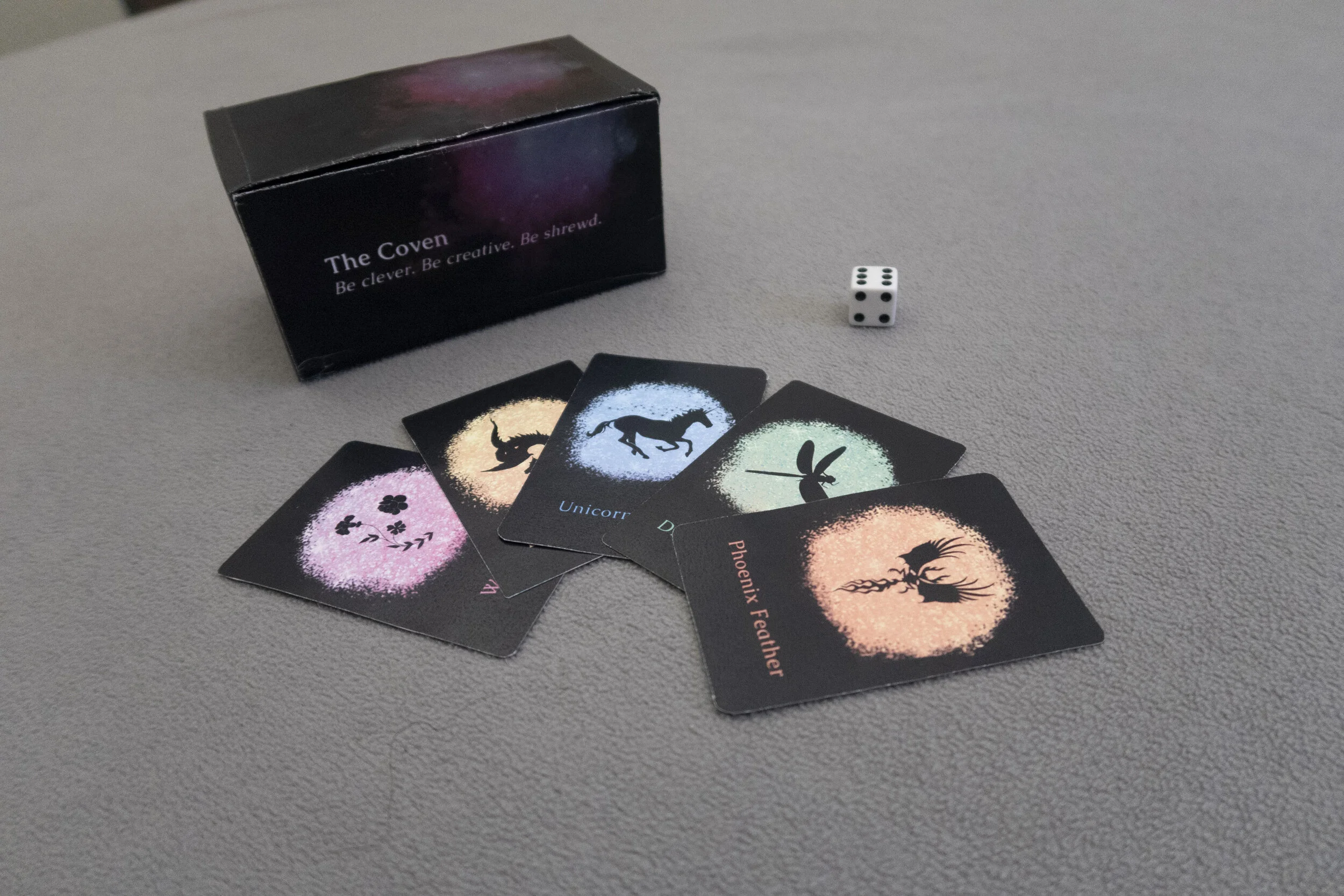
The Coven
Increase Women’s Comfort with Negotiation Through Gameplay

OVERVIEW
For a Persuasive Design course, my team and I were passionate about creating a tool that helps women reduce self-bias and strengthen leadership traits. We decided to focus on improving people's negotiation skills, more precisely, women's attitude towards negotiation.
Through this project, I learned a lot on gender and self biases.
ROLE
Product Designer
METHODS
Embedded Design
Game Design
Playtesting
Rapid Prototyping
TIMELINE
Sep. 2019 - Dec. 2019
TEAM MEMBERS
Emily Yang (Me)
Lauren Whittingham
Lorraine Zhang
Neha Chopade
Stephanie Wang
PROBLEM
Women, more than men, see negotiation as an aggressive act instead of starting a conversation.
In addition to gender biases, research has shown that women continue to earn less, on average, for the same performance, because they don't ask for it. One of the reasons women don't advocate effectively for themselves is that their fear of harming their relationship with the negotiator.

SOLUTION
The Coven is a card game that implicitly helps its players change their attitude towards negotiation, helping them recognize negotiating is the same as having a dialogue.
It utilizes embedded design and gameplay techniques to reframe the concept of negotiation. Instead of prescribing abstract guidance on negotiating, it uses the immersive experience of a light-hearted game to empower women to see that starting a negotiation is not as daunting as they think.
PROCESS
After identifying reducing unconscious self-biases against oneself as our high-level theme, we began brainstorming specific problems related to this issue.
Some of the problems we found were being too critical on oneself, having imposter syndrome or not knowing how to negotiate for one's salary, etc.
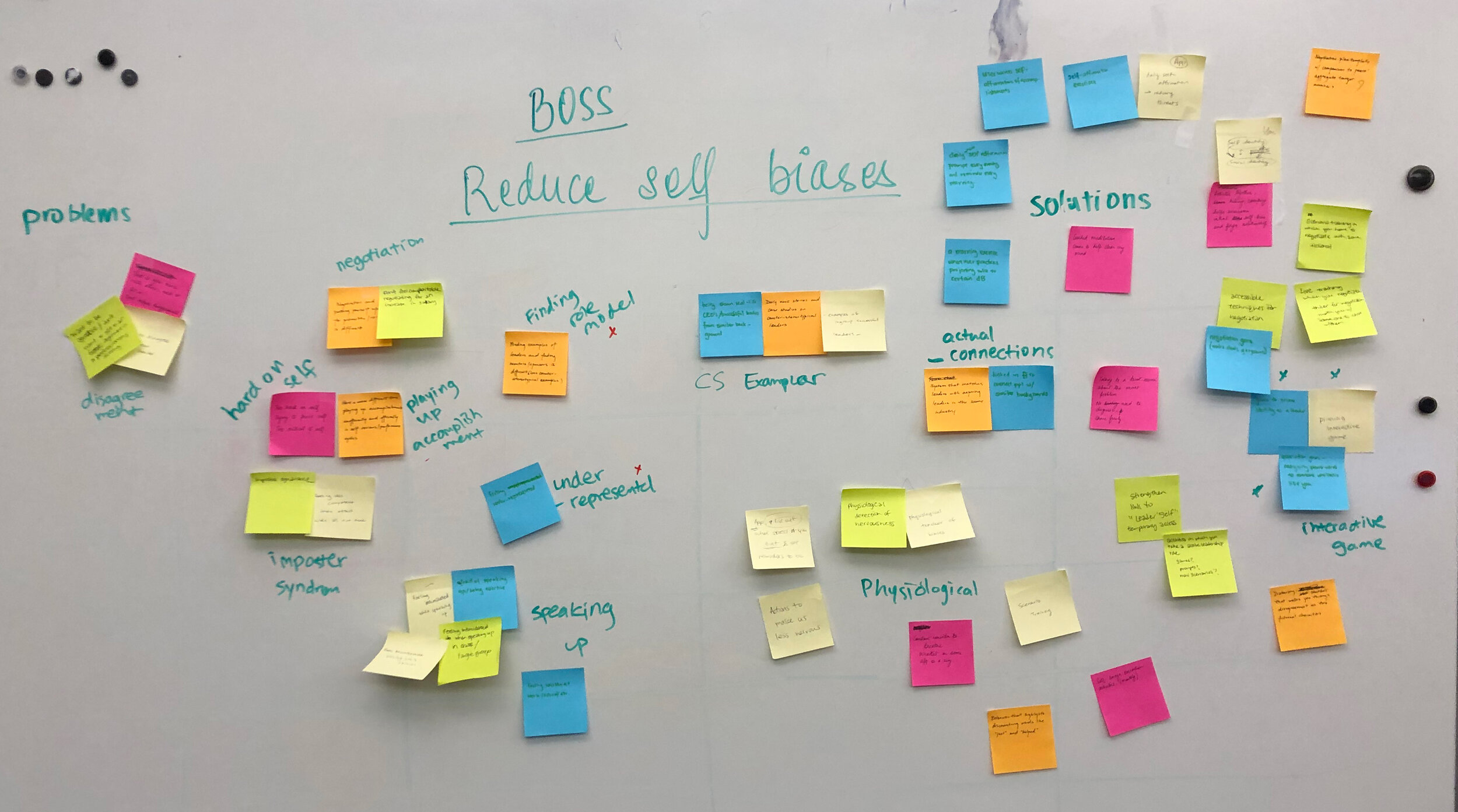

To avoid scope creep, we set our target users to women who work in male-dominated industries,
We drafted an ideal persona and a self-schema map, highlighting the key associations a first-time female employee could have on their job in a tech company. By identifying what our persona would like to strengthen in their self-schema, we reached a consensus to focus on improving negotiation.
and identified negotiation as the main focus of our design problem.



There are no quick ways to improve negotiation skills other than practicing it more often.
After narrowing our design scope, we spoke to Linda Babcock, a CMU professor who is an expert on negotiations and dispute resolution.
We wanted to learn the negotiating techniques she taught in her workshops and draw inferences to design our intervention mechanics. However, after talking to Linda, we realized that instead of focusing on improving women's negotiation skills,
we should focus on how to get people more comfortable with the idea of negotiation.
We arrived at this conclusion because we learned that,
Women self-advocate less not due to their skill level in negotiation, but because of other barriers that are self-imposed or enforced by gender stereotypes
Women often make fewer requests out of fear of harming their relationship with the would-be negotiation partner.

Source: CMU Website
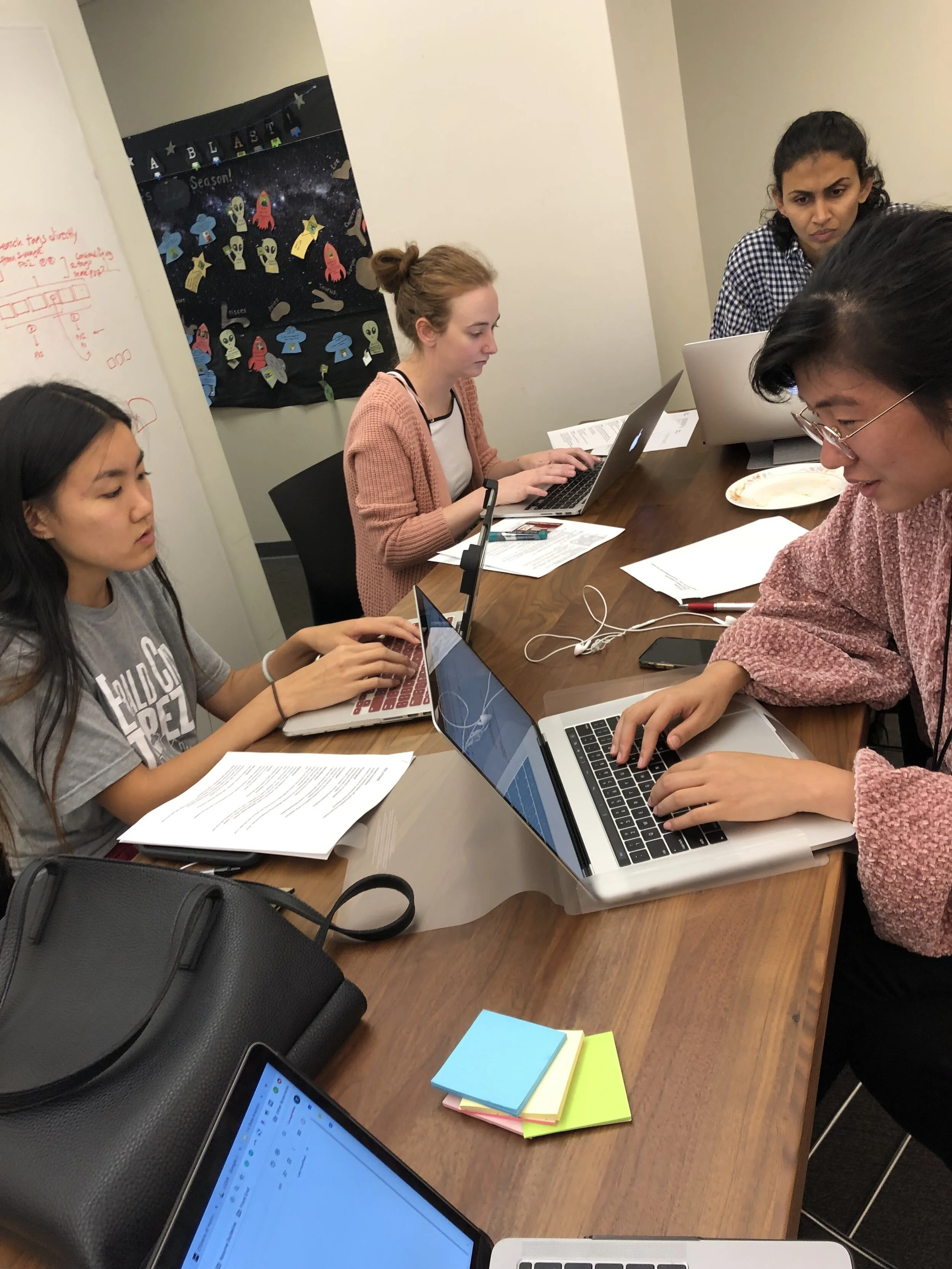
After synthesizing our research, we agreed to intervene through a game-based approach.
We chose to embed our persuasive intent in a game because when a prosocial issue is explicitly presented, it could result in counter-effects. It could trigger people's psychological defenses and reduce engagement.
Therefore, when designing the game, we exercised two key embedded design strategies that we learned from our professor, Geoff Kaufman: intermixing and distancing.
We intermixed our "on-topic" and "off-topic" game content to make the focal message less obvious and more accessible
We created a distance, "a buffer," between players and the uncomfortable themes that our game is exploring by setting the theme agnostic to gender and away from a workplace setting
We performed crazy 8 and rapidly prototyped our ideas.
We decided that our game would take form as a card game because practicing negotiation requires interaction with other players. Some of the initial game mechanics include trading resources and collecting a different secret combination of resources to win.
We tested out various game mechanics during these rapid prototyping sessions and found some aspects of the game to be promising. We then highlighted each mechanism's positive and negative aspects to perfect our game.



After numerous rounds of playtesting with users, we made several pivotal changes that made the game more fun and engaging.



Increase the Chance of Different Negotiating Terms
Initially, people were only trading one resource card for another. This situation reduces the players' willingness to offer different negotiating terms. To combat this, we added diamonds as a way for players to reduce the cost of trading.

Using Action Card to Encourage Trade
We also noticed that some players are hesitant to trade because they are more risk-averse. Since they are not negotiating as often as we would like, we took the chance cards from monopoly and adapted them to action cards to encourage trading. These action cards also make the game more exciting.

Assist Shy Players with Interest Card
Shy players can feel uncomfortable speaking up during the game, especially when multiple players were interested in a trade. This can put them in a disadvantaged position. Therefore to encourage them to speak up, we added an interest card allowing players to show interest without talking over each others.

Reduce Player’s Ability to Count Cards
Originally, it was too easy for players to deduce another player's potion card as players could inherently count cards and identify the leading player's missing resources. This behavior not only reduced trading activities but also cornered the winning player. We improved this problem by changing the total ingredient count a player needs to win the game.
Our Game: The Coven
The Coven encourages players to advocate for their own interests and come to mutually beneficial agreements by recognizing when others' interests are compatible with their own.
It also encourages players to be creative in recognizing what it is they have to offer, even if it is not in their hands at the time. The trading serves as an inoculating mechanism, allowing players to get accustomed to and comfortable with hearing "no" and view it as a normal response rather than something that can damage their relationships.
GAME MECHANISM
In The Coven, players are tasked with creating a potion, each requiring a different combination of ingredients that is hidden from the other players.
Players take turns rolling for resources, diamonds, and chance cards. Players' ingredients and diamonds are openly displayed, allowing other players to identify where resources they need lie. They use what they earn from rolls to trade with other players and become the first person to collect all the ingredients to make their potion. While chance plays a part in how quickly players are able to reach their goal, making favorable trades and being an effective negotiator plays a large part in the players' success.

Observation
We have found that participants who have played The Coven for 15 minutes are more willing to ask and bargain. Seeing how other players negotiate makes shy players feel more comfortable about making a request. After a few rounds of the game, almost all players found it fun and engaging. Rarely anyone knew the embedded goal was to help with negotiating. This increased our persuasive’s impact and ability to produce beneficial outcomes.
“I would buy this game and played this with my friend”
“I got to know people around me and felt more comfortable negotiating.”
“It was super fun and really engaging, I didn’t see the persuasive element, which is good, and I loved it.”

